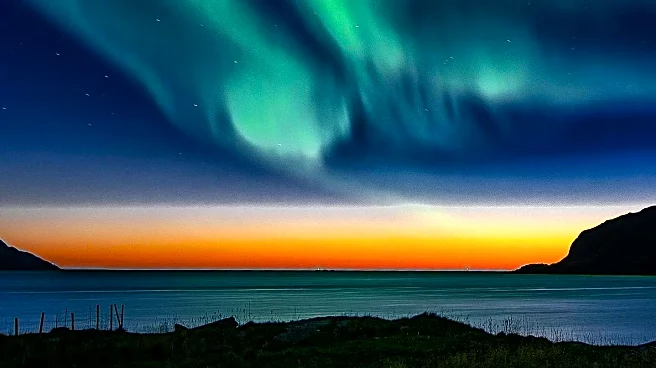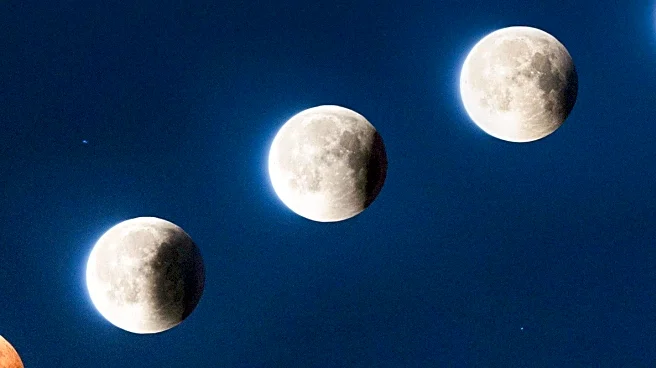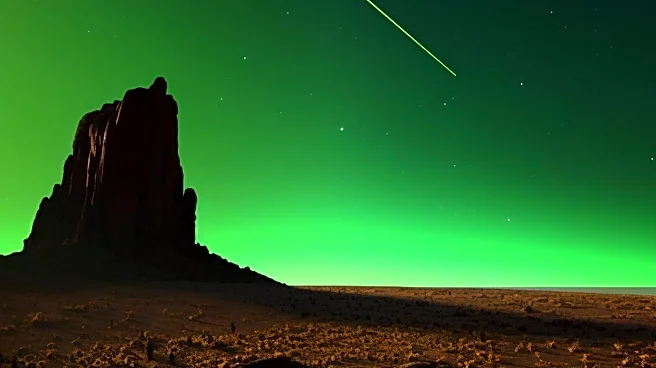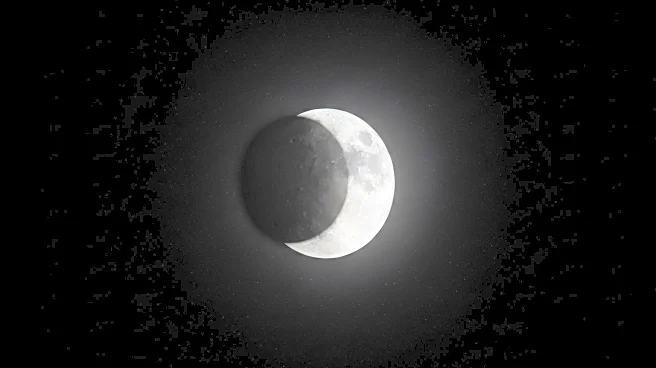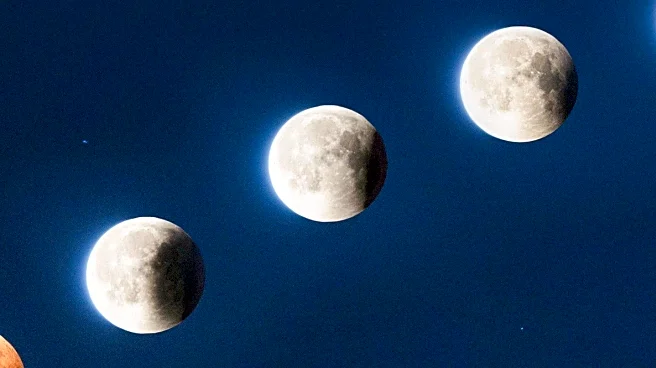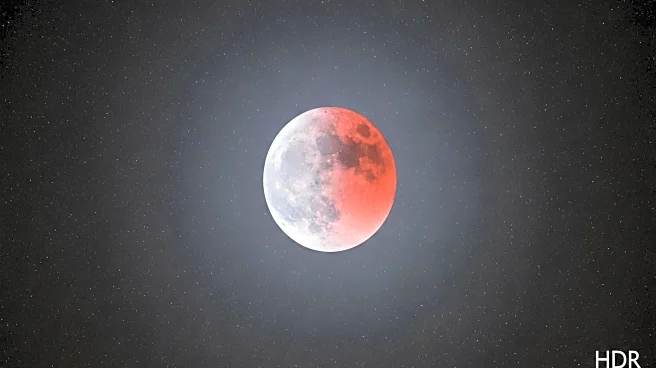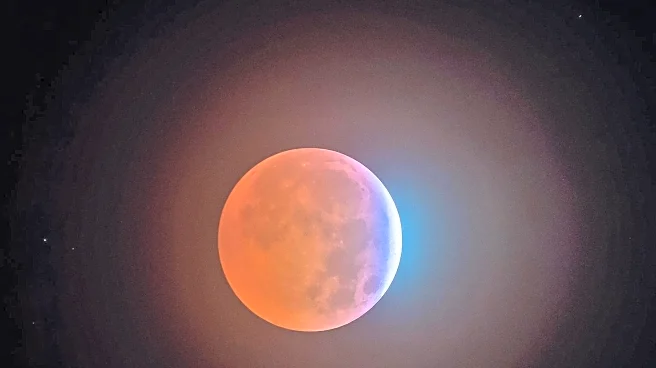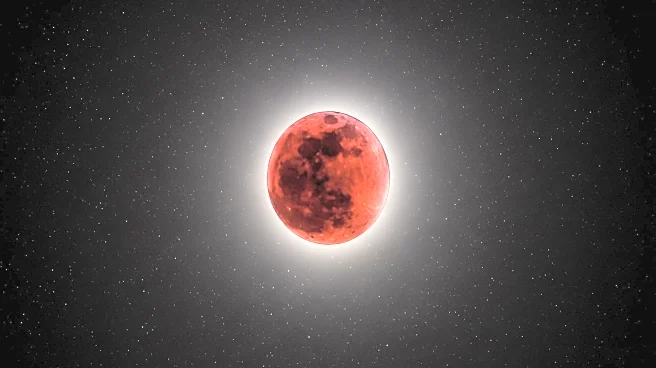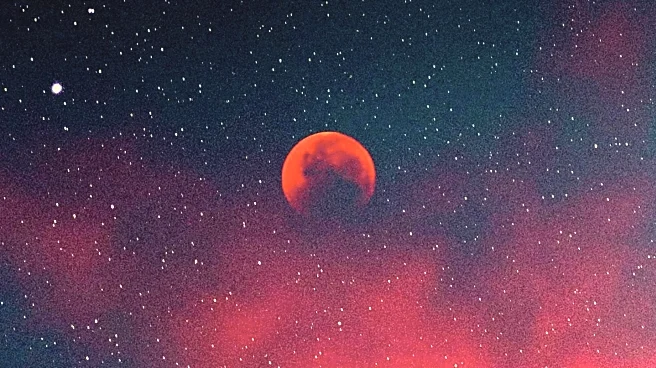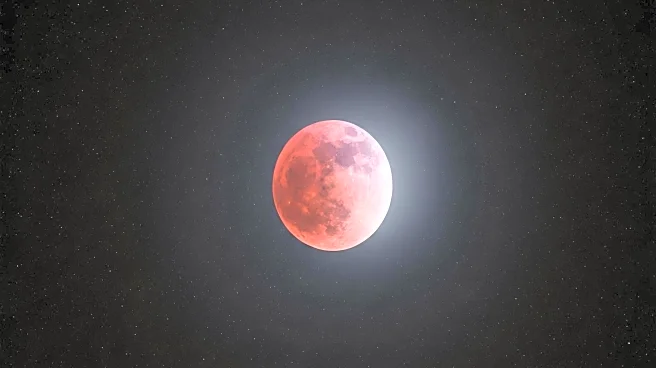What's Happening?
September 2025 is set to be a remarkable month for stargazers, featuring a series of astronomical events. The month kicks off with a morning planet parade from September 1-7, where Venus, Jupiter, Uranus, Neptune, and Saturn will be visible in the pre-dawn sky. A lunar eclipse will occur on September 7, visible in parts of Asia, Russia, eastern Africa, and Australia. On September 16, the crescent moon will appear above Jupiter, and Saturn will reach opposition on September 21, making it highly visible. A partial solar eclipse will be visible in Australia, New Zealand, Antarctica, and parts of the Atlantic and Pacific Oceans on September 21. The fall equinox on September 22 marks the beginning of autumn and is an exceptional time for viewing the northern lights.
Why It's Important?
These astronomical events offer unique opportunities for scientific observation and public engagement with space phenomena. The visibility of multiple planets and eclipses can enhance interest in astronomy and provide educational moments for schools and communities. The northern lights, particularly visible during the equinox, attract tourism and can boost local economies in regions where they are visible. Additionally, these events can inspire future generations to pursue careers in science and technology, fostering innovation and exploration.
What's Next?
As September progresses, stargazers are encouraged to plan their viewing experiences, especially around the new moon on September 21 for optimal Milky Way visibility. The northern lights season will continue, offering more chances for aurora sightings. Observatories and astronomy clubs may host events to educate the public and provide guided viewing experiences. The next significant lunar eclipse visible in the U.S. will occur in March 2026, providing another opportunity for celestial observation.
Beyond the Headlines
The increased solar activity during this period, known as the solar maximum, may lead to more frequent and intense auroras, highlighting the dynamic nature of our solar system. These events also underscore the importance of dark-sky preservation efforts to ensure clear visibility of celestial phenomena. The cultural significance of these events, such as the fall equinox, can be celebrated through festivals and traditions, enriching community life.
